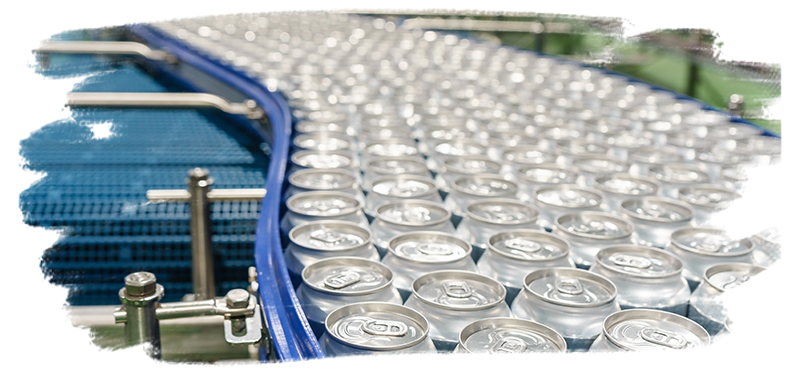
Continuous Improvement
5 min read
Inside the Box: Unwrapping Trends and Tactics in CPG Manufacturing

The formula for CPG manufacturing has some new variables:
Consumers reshaped consumption habits in the pandemic.
Employees are hitting the factory floor with no skills or proper training
Short staffed lines are missing production targets
A temporary, low-skilled frontline needs operational training that speaks their language.
Changes are happening across the entire industry.
And plant managers have been pushed into unfamiliar digital territories.
How will you reduce downtime and hit production targets?
Dozuki works with many top CPG manufacturing brands. Below, we’re going to unbox and unwrap success stories from our customers, insights gleaned, and tactics you can put into action immediately to build the frontline of the future.
Use Frontline Data To Improve Quality
Douglas Laney’s informative book, Data Juice, shares over a hundred case studies of companies leveraging frontline data to make data driven decisions. His philosophy is that data and information accessibility provided to cross functional teams allowed a more comprehensive view of the issues and their potential solutions.
Here’s one passage from his point that resonates deeply with the CPG industry:
“Once you have a robust master data management function and team, then waves of accurate, useful and actionable analytics can be built to drive the organization forward across all functional and operational units of the organization.”
When we launched a pilot program for a top multinational consumer goods corporation, their first question was about reducing quality issues. And our minds immediately went to the data opportunity.
Dozuki’s platform helped them take their data and add a manufacturing analytics layer, so their managers could visualize and make sense of that data in context. Particularly with the process dashboard, which monitors what’s completed, what’s in progress, and the average completion time. It’s not a tool you would want to use for every process, as over analyzing would create too much non value added time.
But when it comes to a critical CPG process such as inspecting cranes, hydraulic work, or safety platform installations, you can learn who are your fastest and slowest workers on the frontline. This helps you identify where the exact bottlenecks are. And if there’s a big disparity between the two, you’ll want to get those operators together to learn from each other.
For example, if it takes Richard twelve minutes to program the pulse display, but it only takes Raquel three minutes, that’s a continuous improvement opportunity. Now you can ask the faster worker:
- What is she doing to make this process significantly faster?
- Is there a best practice we can learn from your workflow?
- How can we drive improvements based on this data?
Remember, data is merely information until it’s connected to people who can act upon it, and communicated in a simple, visual and real-time manner. We recommend to all our CPG customers that this kind of data helps plant managers make more objective decisions that effect significant process improvements.
Reduce Inexperienced Operators’ Learning Curves
In consumer packaged goods manufacturing, companies are running enormous pieces of equipment and doing multiple changeovers in between jobs. Being able to cut down the time it takes to get production up and running again is essential.
As is common with many manufacturing companies, the “best way” to complete a task is often in the heads of their most experienced operators. But with the shifting workforce trends, companies are replacing experienced operators with a younger frontline that has no experience in a factory.
The loss of experienced operators and the lack of captured knowledge creates challenges with training and supporting new operators.
The training manager at one of our longtime CPG customers was recently tasked with thinking outside of the box for their standard work manuals. There’s an exercise we tell them to run, first as a hypothetical brainstorming scenario, and then in real time on the floor with their teams. The thesis of the exercise is as follows:
Imagine you’ve hired a new frontline worker with no manufacturing background. They have been on the floor for two weeks.
But they have no prior training on the changeover task, have never completed the task before, and have no assistance aside from a standard work guide.
What could an inexperienced operator do with the right digital solutions?
Our customer was surprised to find that with the use of Dozuki’s platform, employees performed the changeover with no issues in ninety minutes, versus their standard cycle time of four hours. Their new workers saw a 63% reduction in changeover time.
The good news is, it’s never too late. You no longer have to train frontline workers with unreliable, outdated processes. You can shorten the learning curve dramatically for even the newest of team members. You can track processes with a manufacturing analytics layer. Ultimately putting the digital solutions in their hands to drive process improvements across the organization and engage workers long term.
That’s the formula for transformation, unboxed and unwrapped.
Topic(s):
Continuous Improvement
Related Posts
View All Posts
Training
Closing the Skills Gap Before It Costs You
4 min read
Manufacturers are under pressure. Veteran employees are retiring fast. New hires arrive daily. Meanwhile, production tasks are more complex than ever. Keeping up with...
Continue Reading
Frontline Digital Transformation
Manufacturing 5.0 Balancing Human Expertise in the Digital Era
5 min read
If you’re starting with technology, you’re starting wrong. Manufacturers that start with people, and then follow with technology, stay competitive in the changing...
Continue Reading
Training
Why Workforce Agility Is Your Most Strategic Investment
4 min read
In times of economic uncertainty, slow-moving companies lose. Whether it’s a pandemic, a supply chain breakdown, or a trade policy overhaul, one thing is clear: if your...
Continue Reading



